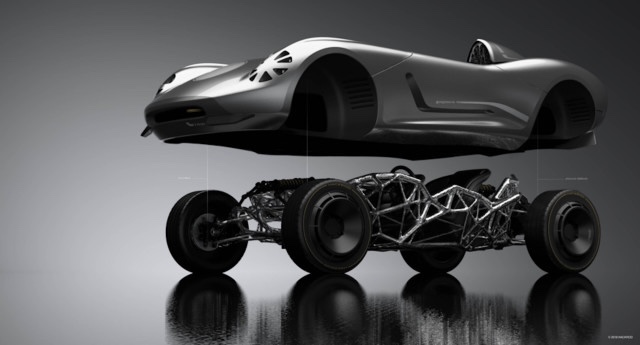Additive manufacturing, more commonly known as 3D printing, was invented in 1981 by Hideo Kodama from Japan. Described as the ‘4th industrial revolution’, the current global market value is £9.5 Billion and predicted to grow by over 23% to £26 Billion by 2026. Some think that this is a conservative estimate.

You might ask, so what?
Well, it’s highly disruptive for starters and will change how things are manufactured, distributed and consumed. This could have far reaching consequences on the production and movement of goods and the application of products and services. Make no mistake, this revolution is going to impact us all in ways that might surprise some of us. This documentary film helps provide an insight to the fast moving world of 3DP.
Printing hardware and software is developing quickly, supported by artificial intelligence and robotic assembly to help optimise product design, which resembles biomimicry – design inspired by nature. Current printing hardware is mostly today a desktop process with relatively small footprints, but just imagine, future printers might be like drones or robotic insects (called relative robots – think spiders) that can build complex structures.

3DP materials now available include;
Plastic – PLA, ABS, PVA, PC, PET, TPU, HIPS, PETG & nylon
Metal – Gold, silver, steel, copper, titanium & tungsten
Wood composite
Carbon Fibre, Graphite & Graphene
Sand, Ceramics & Cement
Food & Bio matter
From prototyping to mass, personalised production
The 3DP process was originally developed to make prototyping more efficient. Today it is being used as an alternative to mass production. The term ‘print farms’ powered by sustainable energy is something, which will become common place as we redefine how we make, consume, share, recycle and upcycle products. Moving components from one country, factory or farm to another, whilst consuming vast amounts of energy and other resources could become obsolete as 3DP becomes faster, more viable and flexible as digital and physical combine in the most efficient ways possible.

Open-source product design is contributing to the growth of both home and industrial manufacture though paid and free 3D models available for download via Thingiverse and other virtual networks.
Products now being 3D printed include food, body parts, buildings, vehicles, tools, machine parts, medical devices and well, just about anything, as illustrated in this short video.
NASA is developing new 3DP processes, which can replicate themselves powered by solar, be entirely regenerative, waste-free and make it possible to not only reach other planets, but also make it possible to return to Earth.
I bought a desktop 3D printer a few of months ago to understand what’s possible and I must say, I have been surprised out how easy it was to set-up and operate. From opening the box, I was printing within thirty minutes. About the size of a desktop A4 paper printer, it sits on my worktop and quietly prints all sorts of things day and night without drama. It’s actually more reliable than my paper printer and far more interesting to watch. In fact, it’s pretty hypnotic!
It is a brave new world, which like the invention of the telephone, will be wonderful for many of us, but undoubtedly will change our lives beyond our wildest imagination. For me, the most positive aspects of this technology are the creative possibilities, reduction of waste and impact on our planet, which like many good inventions will help us evolve as humans and better integrate symbiotically with all life forms.
Ian Bates
Pingback: Single Use Vs Reusable Packaging, Which Has The Lowest Environmental Impact? - Two Sides
Pingback: Single Use Vs Reusable Packaging, Which Has The Lowest Environmental Impact? - Two Sides - TheDailyCheck.net
Pingback: Single Use Vs Reusable Packaging, Which Has The Lowest Environmental Impact? - My Droll